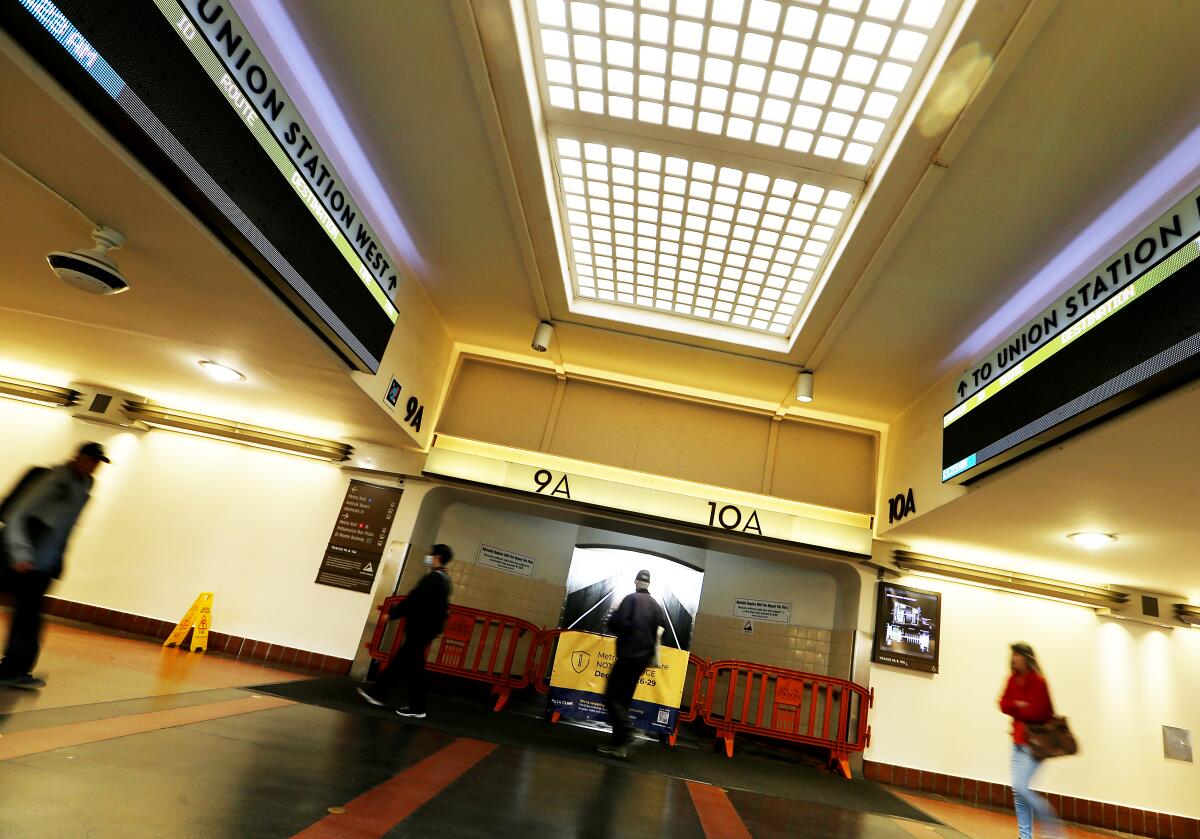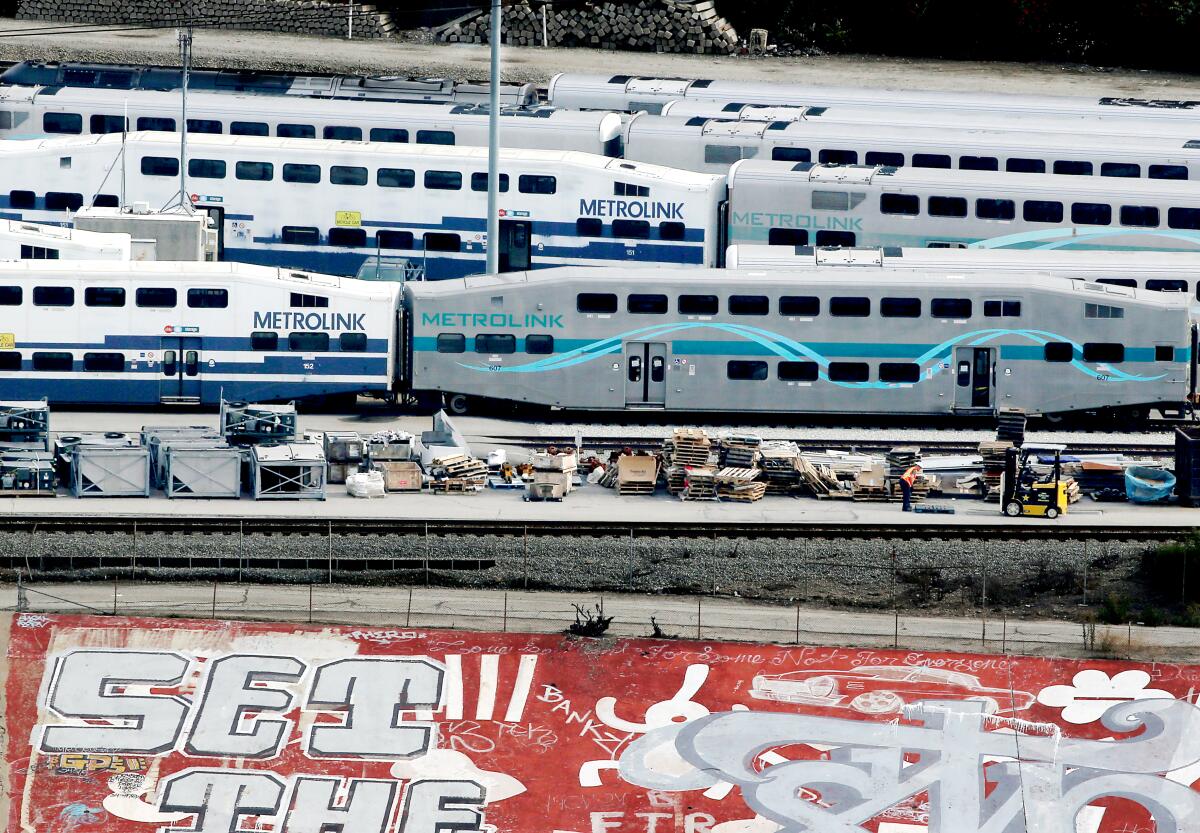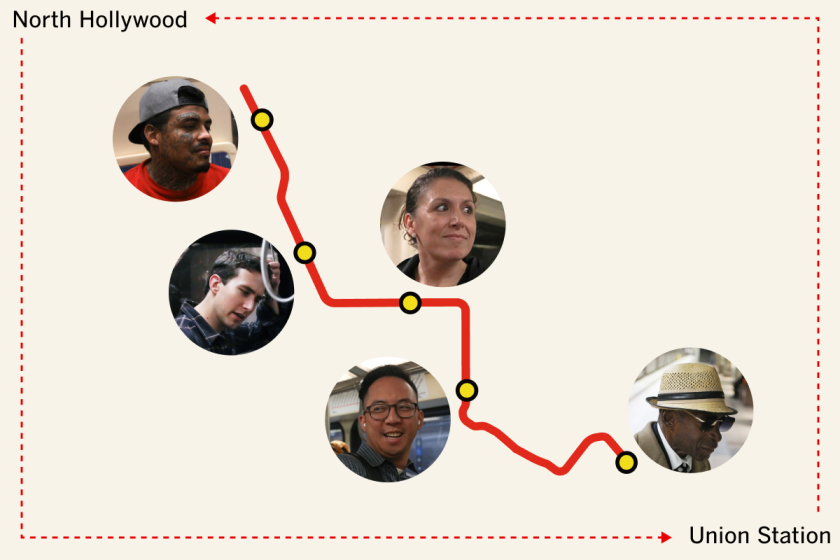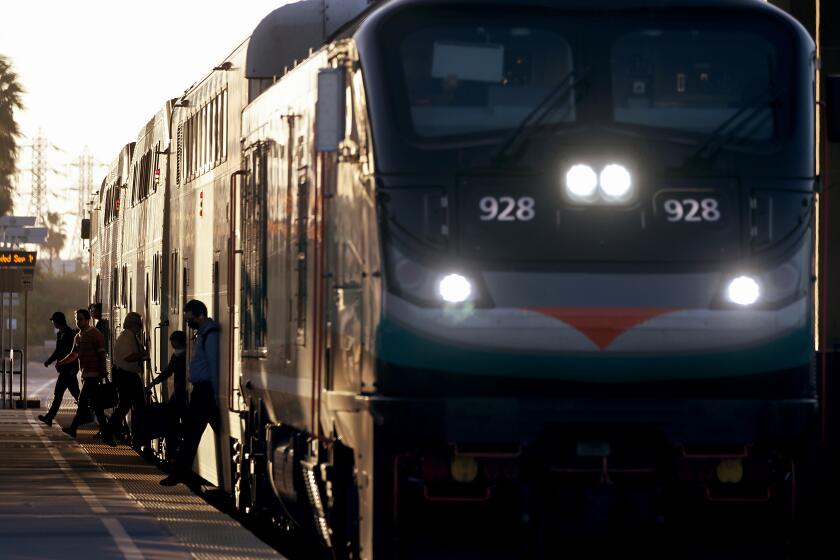Metrolink service closes for four days, starting today

The transportation system of Los Angeles has been beset by labor unrest, arson, presidential motorcades, civil disobedience and just too much traffic. But a four-day stoppage affecting train service this week is more mundane â and perhaps even beneficial in the longer run.
Beginning today, Metrolink service will be suspended for maintenance and enhancements, capping a three-year modernization project.
Trains will not run on any part of Metrolinkâs six-county system through the end of Friday and will resume normal service on Saturday.
The disruption was scheduled to coincide with a lighter period for those who commute to work â precisely unlike the disruption this month when demonstrators pressing for a cease-fire in the Israel-Hamas war blocked the 110 Freeway and then, later, blocked access to Los Angeles International Airport.
âWe scheduled this work on dates of historically low ridership and are working hand-in-hand with our transit partners to identify alternate transportation options for those who will be impacted,â Metrolink CEO Darren Kettle said in a statement.
Theyâre your co-workers, your neighbors and some of the only people you canât blame for making rush-hour traffic worse. We met them riding the Metro B Line start to finish, interviewing everyone we could onboard.
Metrolink has provided customers with alternative routing options on its website.
Metrolink and other public transit systems have struggled to recover ridership since the COVID-19 pandemic â and a better, more efficient ride is part of the plan.
âPlacing our system temporarily out of service was necessary,â Justin Fornelli, Metrolinkâs chief of program delivery, said in a statement. âThis unique break in service will allow us to tackle state-of-good-repair projects across multiple lines.â

Metrolink is operated by the Southern California Regional Rail Authority and serves Los Angeles, Orange, Riverside, San Bernardino, Ventura and North San Diego counties.
The service is a major cog in a local public transit system that is trying to overcome problems that include inadequate regional coverage as well as crime and drug use.
The required modernization work will restrict access in and out of downtownâs Union Station, the terminus for six of Metrolinkâs seven service lines, as well as the agencyâs Central Maintenance Facility, where passenger cars are cleaned and locomotives are serviced daily.
The work will encompass replacing 1930s-era signal relay technology with a âstate-of-the-art, microprocessor-driven signal system, allowing Metrolink to simultaneously run multiple trains on multiple tracks as they enter and depart,â the agency said. The increased capacity is expected to reduce delays and improve safety.
Among other planned projects are repairing concrete on platforms, painting, cleaning canopies and gutters, adding more emergency lighting, and servicing high-voltage components.
Teams also will replace rail on the curvy, mountainous Antelope Valley Line, reducing the need for âslow orders,â which can lead to delays.
Metrolink will suspend all service from Dec. 26 to 29. Here are the improvements that riders can expect and why itâs happening.
âBy modernizing our rail network, we are preparing our system for the World Cup, Olympics and Paralympics,â the agency said.
During the closure, Amtrakâs Pacific Surfliner will bypass Union Station entirely.
âPassengers traveling to or from LAX can utilize bus connections from either Glendale or Fullerton, depending on the specific train they are traveling on,â Amtrak advised. âBus seats are limited.â
Union Station will not be in total shutdown. Other transit providers will continue to operate, including the L.A. Metro light rail and subway service, Amtrak bus connections, LAX FlyAway bus service and LADOT and municipal bus routes. Union Station restaurants and other businesses also will remain open.
Metrolink has posted online a page with answers to questions riders are likely to have.
The agency has secured $2.4 billion for recent and ongoing improvements â part of a $10-billion wishlist for priority projects. The Southern California Regional Rail Authority relies on local, state and federal funding sources for its projects.
More to Read
Sign up for Essential California
The most important California stories and recommendations in your inbox every morning.
You may occasionally receive promotional content from the Los Angeles Times.













